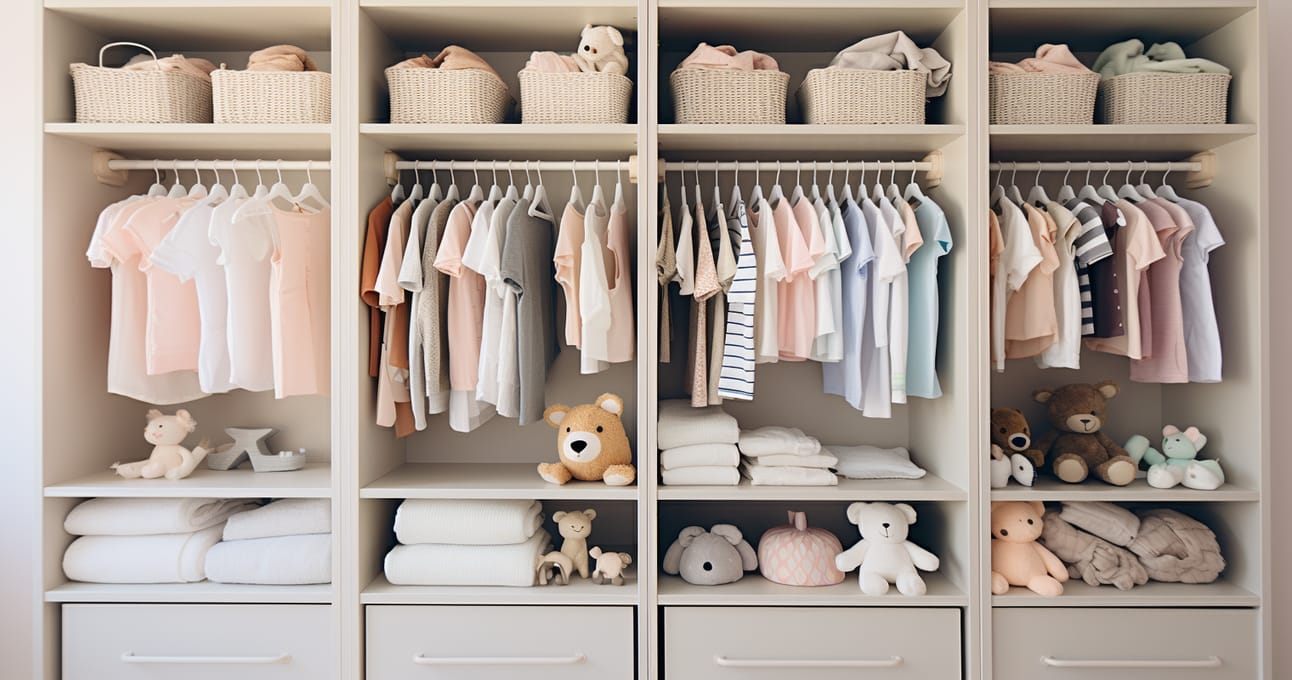Moms, we've all been there.
That overwhelming feeling when staring at a mountain of baby clothes, wondering where to start.
Can a nursery ever be clutter-free? Here's a breath of fresh air: It can!
Dive in as we unravel the secrets to mastering baby clothes organization.
Because every mom deserves a tidy, stress-free space for her little one.
So, what's the best way to organize baby clothes?
Organizing baby clothes effectively involves pre-washing new items, categorizing by size and type, utilizing drawer dividers, adopting efficient folding techniques, labeling drawers, and maximizing storage with hangers, dividers, and specialized storage solutions.
Preparing New Baby Clothes for Storage
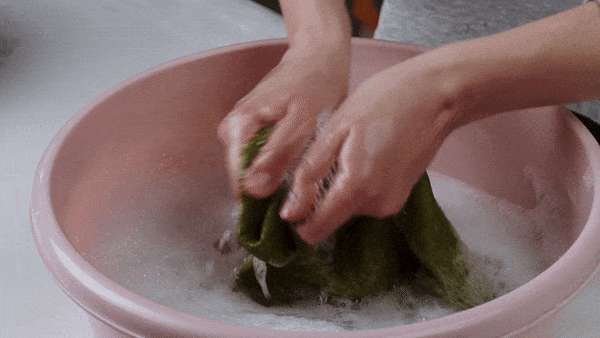
Before storing those adorable baby outfits, there are a few steps to ensure they're clean and ready for wear.
Benefits of Pre-Washing Baby Clothes
Just picked up a cute little onesie? It's tempting to pop it straight into the dresser. However, consider giving it a wash first.
Fabrics often contain residual chemicals: From the manufacturing process, clothes can hold chemicals that might irritate your baby's skin.
Shipping and handling concerns: You never know how many hands have touched that cute romper before it reached you.
By washing them first, you not only ensure cleanliness but also make them softer for your baby's sensitive skin. According to the American Academy of Pediatrics, it's a good practice to wash new garments before their first wear.
Precautions While Washing Newborn Clothes
Be gentle with those tiny outfits!
Use a mild detergent: Babies have delicate skin, so using a hypoallergenic, fragrance-free detergent is a safe bet.
Avoid fabric softeners: They might contain chemicals that could cause rashes on a baby's skin.
Double-check settings: Always use the gentle cycle, and ensure clothes are thoroughly rinsed.
Hanging vs. Folding Baby Clothes
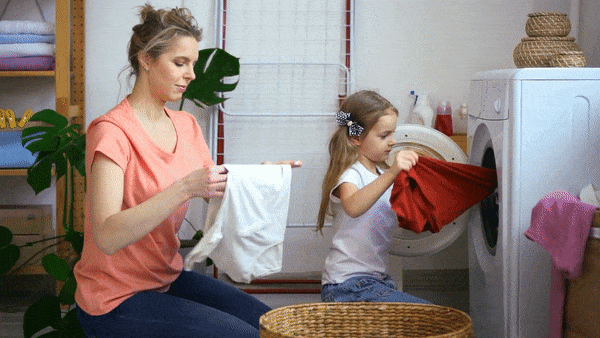
Every piece of clothing your baby owns is special. But should you hang them or fold them?
Criteria for Hanging Baby Clothes
Materials: Delicate fabrics like silk or linen are best hung to maintain their shape.
Dress clothes: Special occasion outfits and dresses should always be on hangers.
Space: If you've got a spacious closet, hanging can make outfits more accessible.
Remember, always use soft, baby-sized hangers to avoid stretching the clothes!
Advantages of Folding Certain Clothes
Space-saving: Folding is ideal for smaller storage spaces.
Fewer wrinkles: Fabrics like cotton tend to wrinkle less when folded.
Easy access: Folding allows easy stacking by size or type.
Categorizing Baby Clothes Effectively
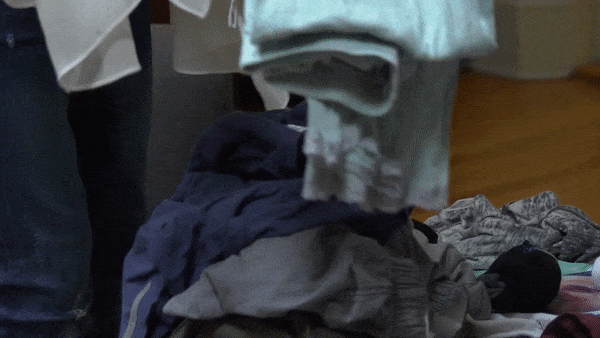
Organization is key! Knowing where everything is can save you precious time during those busy mornings.
Tips for Categorizing Baby Clothes
By age and size: Keeping newborn clothes separate from the 3-month sizes can avoid confusion.
By type: Group onesies together, pajamas in another pile, and so on.
Seasonal sorting: Store away off-season clothes to make daily outfit choices quicker.
Benefits of Clothing Categorization
Quick access: No more digging through piles to find that one cute shirt!
Growth tracking: As your baby grows, it's easier to rotate out older sizes for newer ones.
Efficient laundry: Sorting makes laundry day more straightforward.
Organizing Baby Clothes by Size
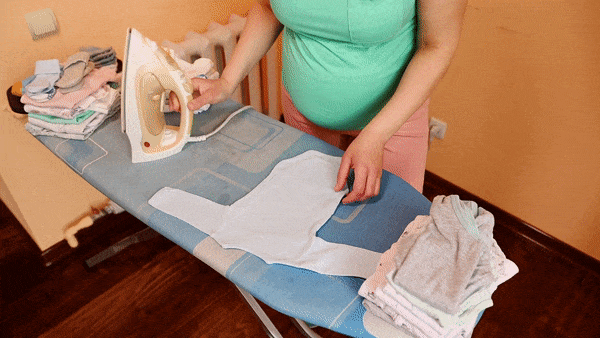
Size matters, especially when your baby seems to outgrow clothes overnight!
The Importance of Size-based Organization
Little ones grow fast. Organizing by size ensures:
Appropriate clothing: You'll always grab clothes that fit just right.
Safety: Oversized clothing can be a hazard. Keeping sizes organized avoids this.
Mayo Clinic suggests regularly checking fit to ensure baby's comfort and safety.
Tricks to Quickly Identify Different Sizes
Labels: Use clear labels on drawers or bins.
Color-coded hangers: Assign a color for each size or age group.
Front-facing: Keep the current size at the front of the drawer or closet.
With these tips in hand, your baby's wardrobe will be as organized as any Pinterest board! Remember, it's all about making life simpler and smoother for you and your little one.
The Advantage of Drawer Dividers
A clutter-free nursery drawer sounds like a dream, doesn’t it? Enter drawer dividers - a mom's secret weapon to tackle that unruly baby clothes mess.
Advantages of Using Dividers
Space Maximization: Dividers let you use every inch of the drawer efficiently.
Easy Access: No more searching. Everything is right where you expect it.
Visual Appeal: A neatly organized drawer is simply satisfying to look at.
According to Good Housekeeping, dividers can drastically cut down the time you spend hunting for that second sock or a matching mitt.
Types of Dividers and How to Choose
Material: There are wooden, plastic, and fabric dividers. Choose based on your nursery’s aesthetics.
Adjustability: Some dividers can be adjusted to fit various drawer sizes.
Durability: Especially if you’re planning to reuse them for future kiddos.
Effective Folding Techniques for Baby Clothes
Everyone has their unique style when it comes to folding. But here are some baby-clothes-specific techniques that can change the game.
The File Fold Technique Explained
It's as simple as it sounds. Fold clothes into small rectangles so they stand on their edges, like files in a cabinet.
Benefits? You can see every item at a glance and pluck out what you need without disturbing the rest.
This method has even been championed by the organization guru, Marie Kondo.
Folding vs. Rolling: Which is Better?
Folding: Best for drawers. Allows for easy categorization.
Rolling: Ideal for travel or tight spaces. Minimizes wrinkles.
Both have their merits. It’s all about what fits your lifestyle best!
Using Labels for Dresser Drawer Organization
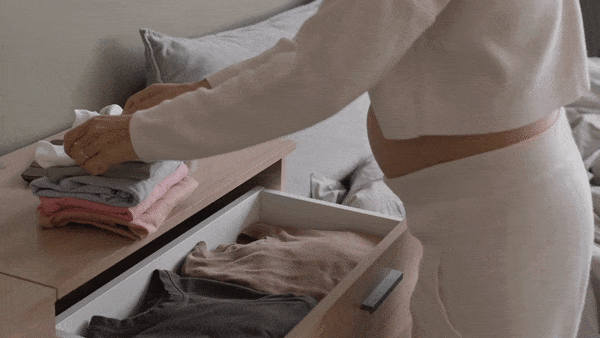
If dividers are the secret weapon, labels are the trusty sidekick. They make life so much easier!
DIY Labeling Ideas
Chalkboard Labels: They’re stylish and can be changed easily as your baby grows.
Printed Labels: Create on your computer for a clean look.
Handwritten Tags: Add a personal touch. Use different colored pens or markers for flair.
Importance of Labeling in Quick Access
Grab what you need in seconds. No more rummaging!
Makes it easy for others. Dads, grandparents, or babysitters can find things without your guidance.
Choosing the Right Hangers for Baby Clothes
Tiny clothes deserve tiny hangers, right? But not all baby hangers are created equal.
Different Types of Baby Clothes Hangers
Velvet Hangers: Non-slip and slim.
Plastic Hangers: Durable and affordable.
Wooden Hangers: Sturdy and aesthetic.
Choose based on your closet’s space and the weight of clothes. Parent's Guide suggests that heavier clothes, like coats, are best suited for wooden hangers.
Criteria for Choosing Hangers
Size: Ensure they fit baby clothes without stretching them.
Shape: Rounded edges are preferable to maintain the shape of the clothes.
Clips: Useful for hanging pants or skirts.
The Utility of Closet Dividers

Closet dividers are more than just pretty accessories. They are an essential tool in a mom's organizational arsenal, making wardrobes effortlessly navigable.
Benefits of Using Closet Dividers
Ease of Access: Find clothes for every age without rummaging.
Rotation Ready: Move onto the next size as your baby grows without missing a beat.
Aesthetic Appeal: A well-organized closet is a treat for the eyes.
As Organized Mom mentions, dividers make transitions between baby sizes a breeze.
DIY Closet Divider Ideas
Hand-painted Wood: Add a touch of personality with colors and designs.
Printed Cardboard: Economical and equally efficient.
Decorative Ribbons: A chic and classy touch to your dividers.
Storing Baby Clothes with Baskets
There's something rustic and charming about using baskets. But aesthetics aside, they're super handy!
Benefits of Using Baskets
Portability: Move clothes around easily, especially handy during laundry days.
Versatility: Baskets fit shelves, under cots, or can stand alone.
Protection: Keep clothes dust-free and in one place.
Baskets are an age-old, yet effective, storage solution.
Types of Baskets for Different Clothes
Wicker Baskets: Great for ventilation. Ideal for daily wear.
Fabric-lined Baskets: Good for delicate items like socks or hats.
Plastic Baskets: Sturdy and easy to clean, suitable for play clothes or outdoor wear.
Adding Extra Closet Rails for More Space
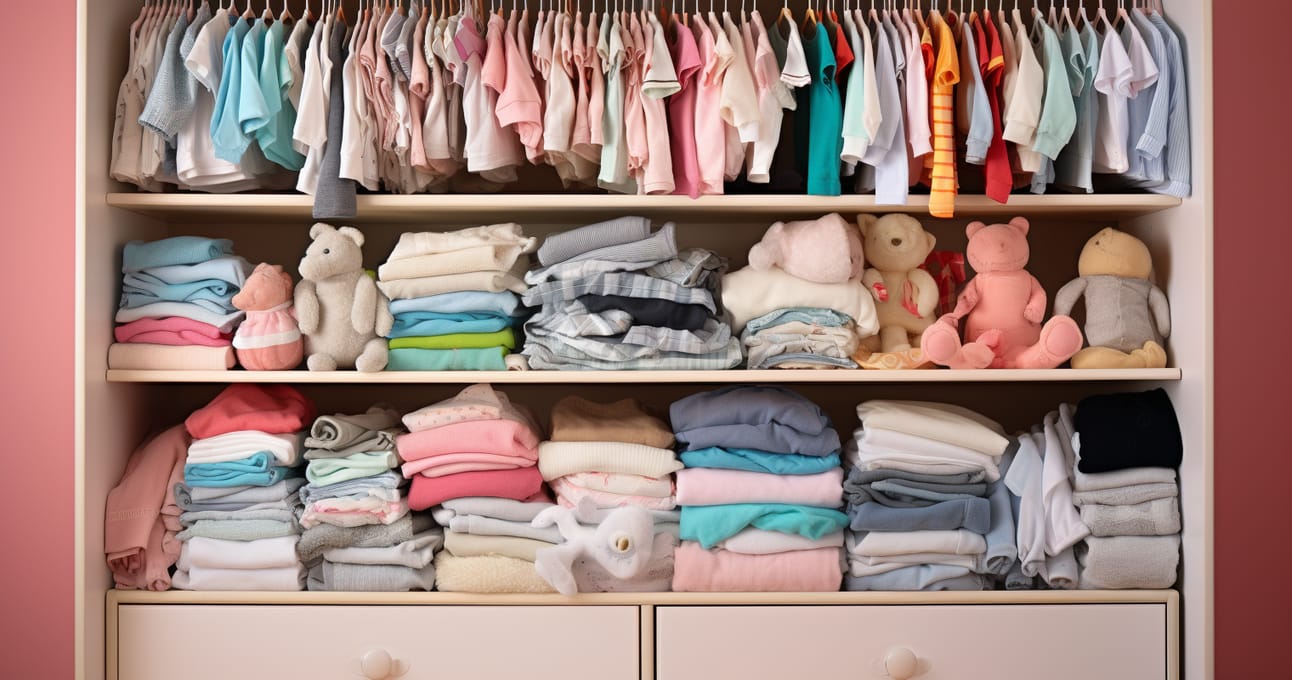
Ever feel like you're playing Tetris with your baby's clothes? Extra rails could be the solution you've been looking for.
Why Consider Adding More Rails
Double the Space: Literally. Stack baby clothes in two rows.
Segmentation: Dedicate rails for specific items or age groups.
Accessibility: Shorter stacks mean less toppling and easier access.
Installing Additional Rails: A Simple Guide
Measure Twice: Ensure you have the correct length and height.
Use Adjustable Rails: They offer flexibility as your storage needs change.
Safety First: Ensure rails are securely anchored to avoid accidents.
Benefits of a Hanging Clothes Organizer
These are a godsend, especially if drawer space is at a premium.
Benefits of Hanging Organizers
Space Optimization: Use that vertical space efficiently.
Segmented Storage: Dedicate pockets or sections to specific items.
Visibility: See everything at a glance, no more digging around.
Using clear organizers is great for added visibility.
Choosing the Right Organizer for Your Needs
Size Matters: Choose an organizer that fits your closet's height.
Material: Fabric ones are soft but sturdy. Plastic versions offer better visibility.
Pocket Depth: Ensure pockets are deep enough to hold clothes without them spilling out.
Expanding Storage with Shelves or Cube Units
Space is a luxury when you've got tiny ones running around. When every inch counts, shelves and cube units come to the rescue.
Advantages of Adding More Storage
Maximize Space: Shelves and cubes make use of vertical space, freeing up floor area.
Flexible Arrangement: Rearrange shelves and cubes as your baby grows and storage needs change.
Visibility: With open shelving, you can spot what you need instantly.
Shelves and cubes are both functional and decorative.
Setup Ideas for Shelves and Cubes
Floating Shelves: A modern touch, perfect for keeping delicate items out of reach.
Labelled Cubes: Designate cubes for different items or age groups.
Decorative Bins in Cubes: Add a pop of color while keeping things neat.
Over-the-Door Storage Solutions
If doors are just openings to you, you're missing out on prime storage space.
Benefits of Over-the-Door Storage
Space-Saving: Make use of often overlooked space.
Easy Access: Keep frequently used items handy.
Protection: Hang delicate items away from little hands.
Doors offer a world of organizational potential.
Types of Over-the-Door Organizers
Pocket Organizers: Perfect for tiny items like socks or mittens.
Hook Racks: Ideal for hanging baby bags or hats.
Mesh Pockets: Good for items you want to spot easily.
Storing Outgrown Baby Clothes
Oh, how quickly they grow! Here's how to store those memories and make room for new ones.
Why Vacuum Seal Bags are Useful
Space-Saving: Compress clothes to a fraction of their size.
Protection: Keep clothes free from dust, moisture, and pests.
Longevity: Preserve clothes for the next baby or for keepsakes.
Tips for Storing Outgrown Clothes
Sort by Size: Store together to find easily later.
Label: Note the size and season on the bag.
Store in a Cool, Dry Place: Basements, attics, or under the bed are ideal.
The Necessity of a Nursery Clothes Hamper
Every nursery needs a dedicated spot for those inevitable laundry loads.
Benefits of Having a Dedicated Hamper
Organization: Separate baby laundry from the rest.
Hygiene: Baby clothes often need special washing. Keep them apart.
Aesthetics: A cute hamper can add to your nursery's décor.
The experts at Clean Home Guide recommend washing baby clothes separately.
Choosing the Right Hamper for Your Nursery
Lidded vs. Open: Lids contain odors but open ones offer convenience.
Material: Consider washable liners for hygiene.
Design: Match your nursery theme or choose a neutral design.
Utility Carts for Flexible Clothes Organization
Who knew a utility cart could be a mom's best friend?
Advantages of Using a Utility Cart
Mobility: Move the cart wherever you need.
Versatility: Change its purpose as your needs evolve.
Accessibility: Open shelves mean everything's within reach.
Organizing Ideas with Utility Carts
Daily Essentials Cart: Diapers, wipes, and a change of clothes.
Feeding Station: Keep bottles, bibs, and snacks.
Play Cart: Rotate toys to keep your baby interested.
There you have it, moms. With these strategies, your baby's wardrobe will be the epitome of organization. A little effort now saves tons of time later. Happy organizing!
Conclusion
Moms, organizing baby clothes might seem like a mountainous task at first glance, but with the right strategies, it's a breeze.
Remember the mantra:
Pre-wash before storage to protect your little one's sensitive skin.
Decide between hanging or folding based on space, garment type, and material.
Use soft, baby-sized hangers to prevent any stretch marks.
Prioritize accessibility and neatness.
Vacuum sealing is a gem for storing outgrown memories, while utility carts are your mobile organizers.
A dedicated nursery hamper is essential, not just for aesthetics, but for baby's health.
So, what's the best way to organize baby clothes?
It's all about being proactive, categorizing effectively, and maximizing your space with smart storage solutions.
Dive into organization with the assurance that a clutter-free nursery isn't just a dream - it's entirely achievable.
Happy organizing!
FAQ
How often should I wash baby clothes?
For daily wear, it's ideal to wash baby clothes after each use because infants tend to be messy with spills and drool. However, clothes worn for just a short time can be used again if they're not dirty. Always prioritize cleanliness to ensure your baby's health and comfort.
Can I use regular laundry detergent for baby clothes?
While it's possible, it's safer to use a hypoallergenic, fragrance-free detergent for baby clothes. Babies have sensitive skin, and regular detergents might contain chemicals that could cause irritations or allergies.
How do I manage baby clothes that have stains?
Act fast! Rinse the stain in cold water, then pretreat with a gentle stain remover. After that, wash as you usually would. For stubborn stains like food or poop, using a brush can help. Always check the care label on the clothing before treating any stain.
When should I start organizing clothes for bigger sizes?
It's never too early. Babies grow quickly, so having the next size up organized and ready can be a lifesaver, especially during growth spurts. Just ensure they're stored in a way that they remain clean and fresh.
How do I declutter old baby clothes?
Start by sorting clothes into three categories: keep, donate, and toss. Clothes that hold sentimental value can be kept for future children or as keepsakes. Items in good condition can be donated. Anything worn out or damaged should be recycled or repurposed, if possible.

